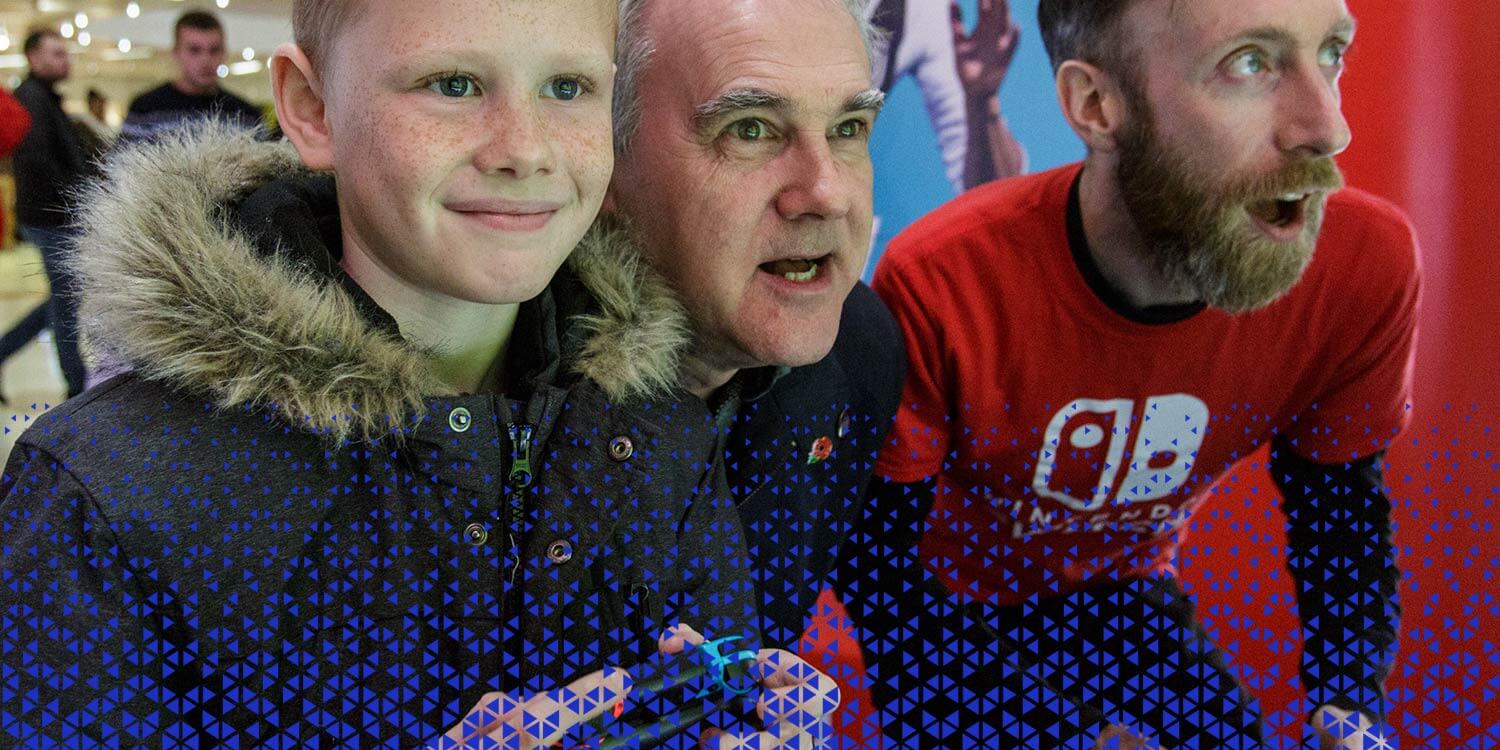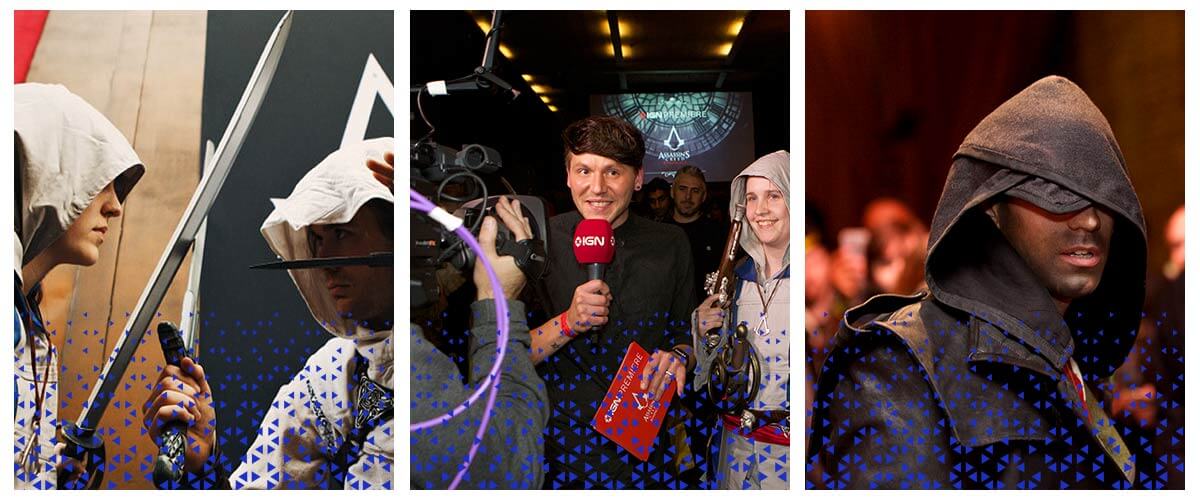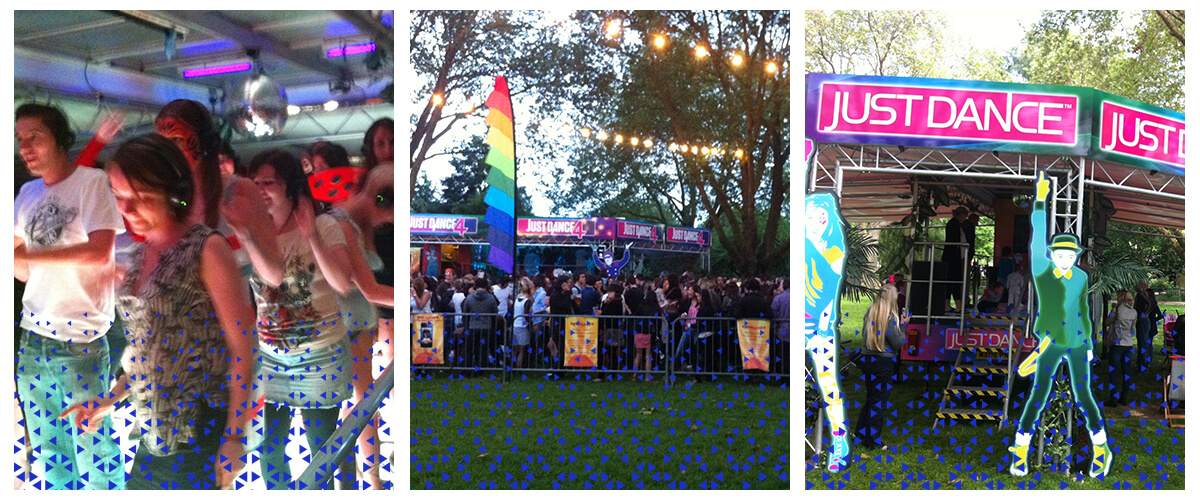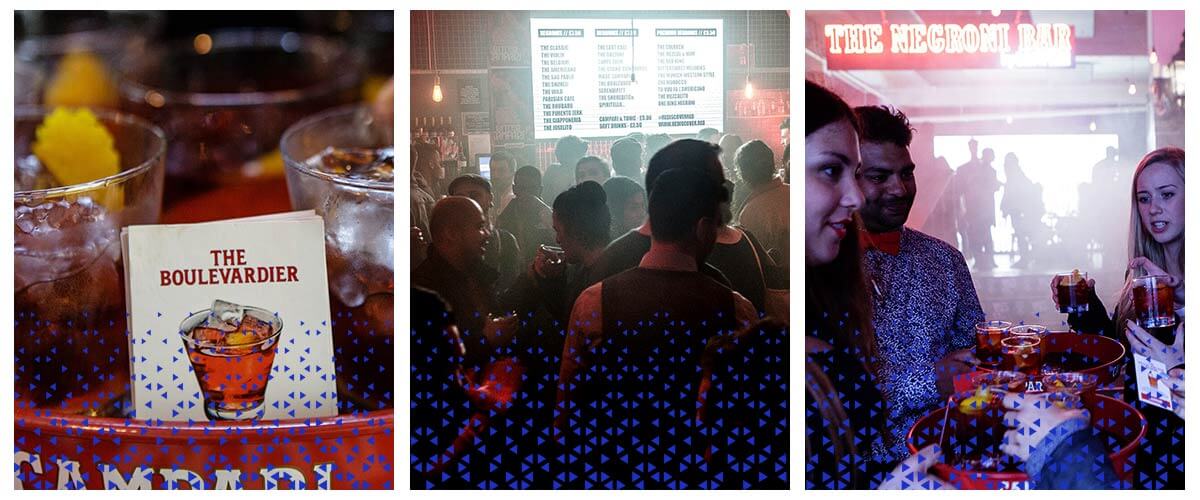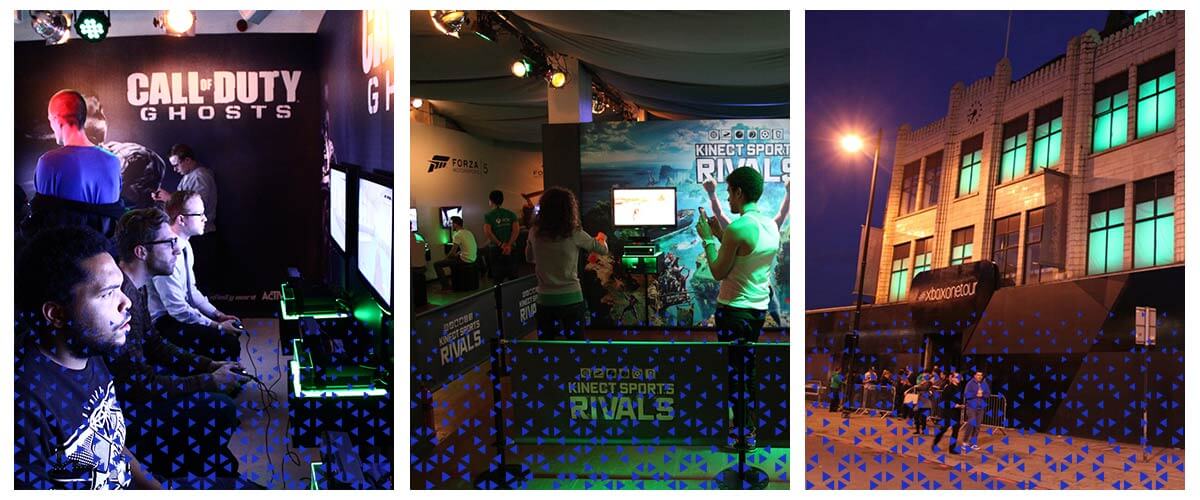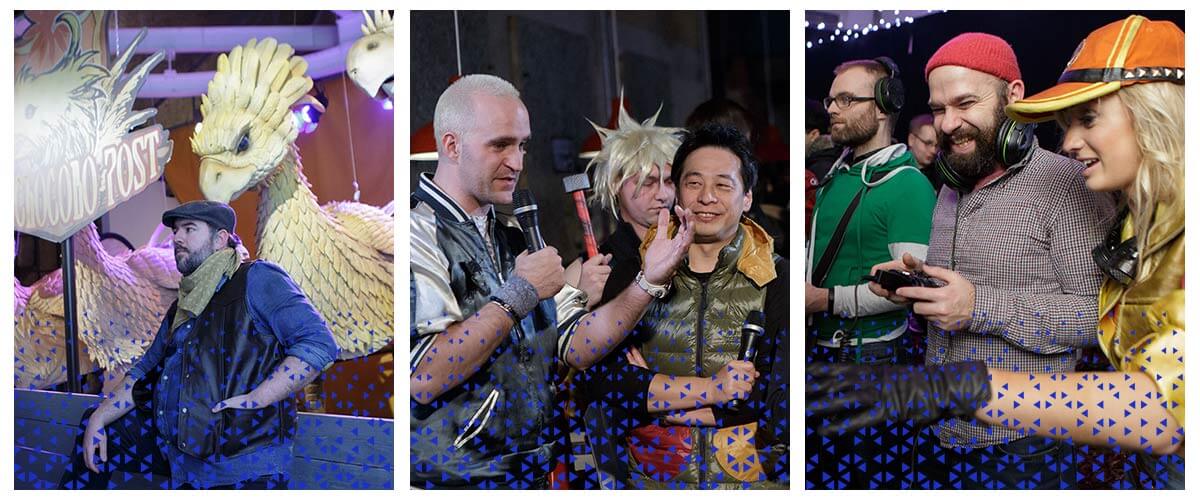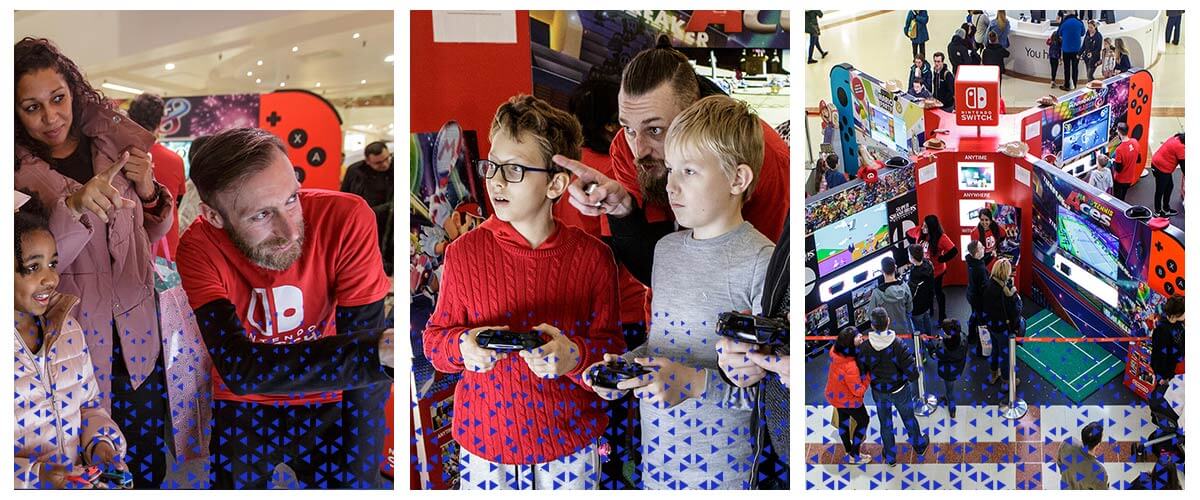7 Key Brand Experience Agency Learnings
Discover 7 key brand experience agency learnings that help create success and boost engagement.
Deeper more meaningful relationships are created when people ‘experience’ a brand optimally. But for this to happen, experiences must be perfectly planned and beautifully executed – or the opportunity to connect can be lost.
What is brand experience?
Brand experience essentially marries an audience with a brand or product, in a ‘set and setting’ designed to give the best possible chance of positive discovery. Why? Because people need to first trust and understand something before they spend their hard earned money – and experiencing a brand, product or service is the best way to build and secure this trust. In a world where trust is on the decline, brand experience is the best game in town to help brands establish trust, build loyalty and develop understanding with consumers. This dynamic explains why experience-led marketing has become one of the central pillars of the marketing mix. In fact the ‘consumer experience’ has come to lead the planning across multiple marketing channels – not just in experiential marketing.
We’d like to share with you the TED Experience top seven rules to successful brand experience. Here follows some of our biggest strategic learnings, key to ensuring the perfect interaction between brand, product and consumer.
1. Keep it real! Successful brand experiences reflect audiences passions
Brand experiences aim to build strong connections. In order to connect or ‘cut-through’ to consumers, one must first understand the audience. ‘Consumers’ are people first and foremost – they need to be understood empathetically. Agencies must use a host of methods to research and understand their audiences by discovering behavioural insights and need states. Data is key here, but it needs to be balanced by other variables: Effective brand experience planning is born from a combination of consumer insights, audience understanding, accepted human psychology and a healthy amount of gut feel. Another meta consideration is that authenticity is crucial to building brand relationships – so be careful not to follow fashion and shoe-horn in the latest trend: Jumping on an new fad for the sake of it, can be perceived as insincere or desperate.
When tasked with creating an immersive brand experience for the launch of Assassins Creed Syndicate we had to hit the authentic note with a very critical audience. So we gave super fans an exclusive tailored experience and a first chance to play the game, as well as meeting the Game Director and his team in person, set in a specially designed authentic environment from the actual game itself. We drove authenticity and credibility further by orchestrating deep dive interviews with the director and cast, which formed part of a global live stream – taking the content of the piece to a wider audience of millions of fans around the globe. The campaign was referred to as ‘the new benchmark for launching a game’ by the Global Game Lead on Assassin’s Creed.
View the full brand experience case study for Assains Creed here
2. Go Deep! Better engagement means deeper brand connection
Effective brand experience demonstrates product relevance to the target audience. The engagement should provide a genuinely relevant experience – uniquely ownable by the brand, and creatively providing something unmissable for the audience. If these axioms are observed organic content and broader audience reach through word of mouth and social sharing happen naturally, because people love to share genuine experiences that connect with them.
A great example of this strategy working well is the experiential work we created for the first console dancing game ‘Just Dance’. We created a brand experience asset: ‘The Just Dance Disco Truck’ that enabled the experience to be enjoyed in high streets, festivals, universities, and gaming events – we even did a week at London Zoo! The activity was successful because it demystified the game for people by allowing crowds of people to join in with the players by just copying the dance moves. The insight that people are more inclined to dance together the bigger the crowd, helped shape the strategy. The uniqueness of the Just Dance Disco bus, with its sound adaptive disco floor and 4k sound rig was inescapably seductive. It also provided the perfect back drop for organic social sharing and word of mouth.
You can see the work in more detail here.
Likewise our work with Campari precipitated extended deep experiences with the brand’s adorers and general cocktail enthusiasts. Our bespoke Shoreditch pop-up bar ‘The Negroni Bar – by CAMPARI’ allowed drinkers to hang out and experience the world of CAMPARI in a multivariant sensory experience: Order a choice of 30+ Negroni serves while being immersed in a speakeasy style bar featuring a street scene retrospective of the last 100 yrs of CAMPARI art, modern day installations inspired by the product, a curated DJ menu nightly and opportunities to win limited merchandise and art.
View the full Campari brand experience case study here
3. Trust in trust. Don’t patronise or prescribe.
Brands aspire to build ‘trust’ with consumers because ‘Trust’ is one of the central pillars to eliciting purchase and establishing relationships that lead to brand loyalty. But trust is a two-way street – so brands need to trust that consumers understand what they like and what they want to discover. One of the most common errors that many brands make is too curate prosaic linear experiences that demand people experience something in a predefined and strict route. A rational ‘one’, ‘two’ ‘three’ linear architecture of experience is not the way to emotionally connect with people, and can be interpreted as condescending or restrictive. Better instead to allow consumers to find their own way, trust them to engage with the aspects that hit their own personal tastes – this builds deeper engagement.
When we launched the Xbox One console for Microsoft, we fully embraced this strategy by taking over a disused warehouse and converting it into a temple for gaming enthusiasts. Seven rooms set over two floors featured different activities and gaming action, and fans had complete control over what they accessed, according to their preferences and interests. Not only did this produce deep enagegment and talk-up, but it also provided useful feedback for the Xbox team in terms of how their core audience preferred to use their product across different ages, genders, different games etc – essentially producing a quantitative and qualitative piece of audience research on top of the broader launch goals of cut-through and positive social and press.
View our Xbox One Launch case study here
4. Aim for Epic! Be memorable if you want to be remembered.
People lead busy lives and time is their most precious commodity. Why should people give up their time for a brand or product? Why should they even care? In order to be successful, create demand, achieve full attendance, and then pivot from this into fame, brands need to do something exceptional for their audience. This may sound obvious – but most experience campaign planning forgets this basic premise. Part of creating something epic, is to ensure that your event or pop-up has interesting people, influencers and experts from the scene – people whom the audience perceives as high currency and aspire to meet and chat with. So a proportion of the budget should be spent on talent and people of interest. As an aside when we say influencers – we don’t mean self-serving teenage youtubers. The talent needs to adhere to the previous axioms of sincerity, being genuine and understanding your audience! So invite people who your audience respect.
When we launched Final Fantasy XV we needed to deliver something exceptional because the game heralds one of the most fastidiously detail orientated and demanding audiences of any game / brand. We flew in the Game Director from Japan and also some of the actors from the Final fantasy film to ensure gravitas – and also to sign off on our recreation of some of the scenes from the game. We trained actors to perform the games characters and even cut their hair to the exact specification of their characters. The entire evening was a moving piece of immersive theatre, anchored by a presenter, and produced by the TGIF team. One further challenge was to ensure the essence of the event transcribed down the lens to the millions of people who tuned in to the live stream and VOD.
View the full brand experience case study for Final Fantasy here
5. Tech is your friend. Complexity is best handled with automation, not people.
Managing, executing and measuring brand experience campaigns can be complex, especially if the work spans weeks, months or even years in some cases. Add to this multiple locations and differing executions of the same campaign, sales of product on site, payment transactions, customer data and you have all the ingredients for pain and error! It is paramount to assess these variables and define their respective measurement and management while still in the campaign planning process. Technology and smart apps are the most effective way to accommodate complexity, report accurately, without the human resource bill for the work soaring.
At TED we decided to invest in technology way back in 2012 when we launched Kinect for Xbox 360. Since then the technology has gone through many iterations. When we launched Coca-Cola Zero Sugar in 2017 we created a fully integrated smart app and portal that enabled management of all the operations and staffing variables, tracked live effectiveness in the moment and presented all data live on a dashboard accessible on any screen. This campaign eventually delivered over 17 million perfect serve samples to consumers in festivals, high streets and train stations all over the UK for a period of nearly two years. So an integrated platform was essential in being able to aggregate data throughout the period and present this in graphs and charts in real time. More recently our TED Tech [as we call it] was essential during the pandemic. Find out more detail on our TED Tech here. We recrtuited, trained and the managed a team of 230 sales experience experts to demonstrate and sell IQOS devices in Sainsburys. The campaign went live in May at the start of the pandemic, and our office team were all working from home. Our technology platform played a central role in tracking stock, managing staff performace and facilitating sales.
View our Coca-Cola Zero Sugar case study here
6. Location Location. Ideas and experiences must be tailored to their user environment.
The environment in which an experience is held or staged becomes a major vector in the success of otherwise of the experience itself: Often Brands have clearly defined creative visions for their brand experiences. Sometimes this is due to the creative being extrapolated from broader advertising, or sometimes it might be born from their creative agency who originate ideas that they wish to live experientially. But not every idea translates literally into the experience realm. It is therefore super important to consider the environments of a planned experience to allow for an evolved concept that is optimal. This is particularly salient when an experience tours, such as a roadshow or series of Pop-Up experiences in different venues. One must consider ‘how’ humans behave in a specific environment, and ensure that whatever you install or build is complimentary and sensitive to the way humans behave in this place, mall, event centre, festival etc. Tailoring the creative or building a stand that is best suited to a given environment is often a deciding variable of success.
When we launched Nintendo Switch to the UK market in 2017 we faced with the challenge of designing and building a promotional stand that would work across all UK Malls, Gaming events and other busy consumer environments like Train Stations. We knew that the footfall in such locations behaved in a chaotic and non-uniformed way, approaching from all directions. We also knew that the locations were always busy so there was a need to not just cater for multi directional approach, but also allow for flow of large numbers of people through our stand. Nintendo also wanted their brand proposition to be visually communicated to people from any angle, and for their games and creative messaging to be interchangeable in any location, and in line with new releases through the three years of the project. So these limitations and stated aims became the driving variables in the design of the stand. The final concept was an open stand from four directions, with interchangeable elements throughout. The design concept was essentially an oversize version of the product which ensured that at first glance families knew instantly what the experience was all about.
You can see more detail on the Nintendo Switch Roadshow here.
7. The last six yards. Experiences are ultimately people meeting with other people.
When all the planning is over, when the brand assets are built, and the venue or media space is booked, the last six yards of any project is when a consumer meets a brand ambassador, salesperson or brand representative. Essentially everything boils down to the moment when a person meets a person – so this final stage is supremely important. As well as being competent in the required project skill needs, it’s also crucial to recruit and train brand ambassadors with your audience in mind – so that there is natural cohesion and empathy. The recruitment and training of team members is so important that it really demands its own article to do the subject matter justice! But suffice to say that properly motivated, passionate, and highly trained individuals do not grow on promotional trees – so one must invest considerable time into this aspect of the project to reap the best results.
We decided fifteen years ago to launch our own internal staffing agency [Ted Staffing], due to the importance of this element in the brand experience mix. By owning the staffing process, we can illicit a greater control over all parts of the discipline and adapt to change and challenges far quicker than if we used a staffing partner. The type of individuals required really varies enormously depending on the job and the brand. By way of an example consider the following campaigns and their respective needs for human stewardship:
- Coca-Cola need people who are hardy enough to have their hands in ice buckets all day, sampling product to consumers, whilst being detail orientated and diligent enough to remember to deliver all three brand messages and a recycling message with every can!
- IQOS requires sales experience people who are resilient enough to stand on their own in a store environment all day, while being able to adapt to many different people from all walks of life, and explain to them the benefits of stopping smoking traditional cigarets, and moving to a reduced risk product like IQOS
- Warner Bros press launches demand staff who are gamers and whom know and love whatever product being launched, for example ‘Lego Dimensions‘ in this case study. Staff also need to be personable enough to be able to hang out and talk to the worlds press at the bespoke designed launch event, ensuring messaging is perfect.
One can start to understand just how important the staffing of a given campaign is and how this one campaign variable can decide the difference between success and failure. .
Concluding
In summation: When creating or orchestrating live brand experiences, roadshows, pop-up events or whatever the brand experience is, it is essential to navigate the areas discussed in this article if one is to ultimately be successful. One must know one’s audience and sincerely cater to their passions. Be relevant so that engagement comes naturally. Do something exceptional if you wish to be remembered. Use technology to do the heavy lifting and strictly consider the locations used and how humans behave in these settings to achieve engagement. And lastly remember that humans respond to humans – so pay particular attention to this interaction and the variables of recruitment, training, and management. There are many other ingredients to successful brand experiences – but if you follow these seven strategic axioms you won’t go far wrong!
For more examples check out the rest of our case studies here
– Brand experience case studies
